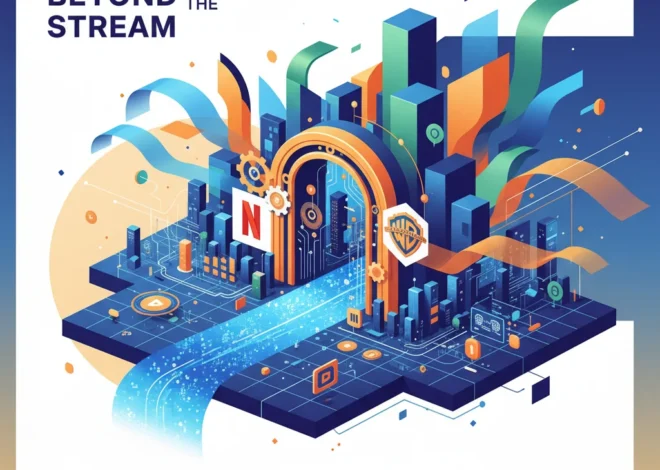
Beyond the Pitch: How Geopolitical Tensions Are Redrawing the Global Financial Map
In a move that feels more suited to a high-stakes diplomatic summit than a sporting event, Italy recently announced the deployment of its army to manage security for an upcoming World Cup qualifying football match against Israel. The reason? Thousands of protestors were expected to descend on the stadium, turning a simple game into a focal point for deep-seated geopolitical grievances. While a sports headline on the surface, this event is a stark and potent symbol of a much larger trend: the increasing intrusion of geopolitical risk into every facet of our globalized society, with profound implications for the economy, financial markets, and investment strategies.
This isn’t just about football; it’s a microcosm of the new reality for business leaders, investors, and finance professionals. The days of analyzing markets in a purely economic vacuum are over. Today, a protest in Reggio Emilia can be as indicative of market sentiment as a central bank announcement. Understanding the ripple effects of such events is no longer a niche specialty but a core competency for anyone navigating the complexities of the modern global economy.
From Sidelines to Frontlines: When Geopolitics Becomes Market Risk
The decision by Italian authorities wasn’t made lightly. It was a direct response to credible intelligence about large-scale protests targeting Israel’s participation in the tournament, as reported by the Financial Times. This single data point serves as a powerful illustration of how international conflicts are no longer confined to distant borders. They manifest in our cities, disrupt our daily lives, and, most critically for our audience, introduce a volatile and unpredictable variable into financial equations.
For decades, the prevailing wisdom in global finance was that economic interdependence would foster political stability. The theory of “capitalist peace” suggested that nations with intertwined economies would be less likely to engage in conflict. However, recent years have challenged this assumption. From trade wars and Brexit to military conflicts and the subsequent weaponization of the financial system, politics is now a primary driver of market volatility. The stock market no longer just reacts to earnings reports and inflation data; it now swings violently on diplomatic statements, sanctions announcements, and, yes, even security measures at a football match.
This shift forces us to ask critical questions: How do we price this risk? How does it affect corporate earnings, supply chains, and consumer confidence? And what does it mean for long-term investing strategies when the foundational assumptions of global stability are eroding?
The Economic Cascade: How Tensions Translate to a Balance Sheet
The connection between a protest in Italy and your investment portfolio might seem tenuous, but the causal chain is direct and powerful. Geopolitical instability creates uncertainty, and markets despise uncertainty more than anything else. This manifests in several key areas:
- Supply Chain Disruption: A conflict in one region can halt the production of a critical component, sending shockwaves through global industries. We saw this with semiconductor shortages and the impact of the Ukraine conflict on food and energy supplies. Businesses must now factor in the stability of a supplier’s home country as a core part of their risk management.
- Energy and Commodity Shocks: Many of the world’s most volatile regions are also critical producers of oil, gas, and other essential commodities. Political turmoil can lead to immediate price spikes, fueling inflation and squeezing corporate and consumer budgets alike. This directly impacts the profitability of countless companies and the real returns on investments.
- Capital Flight and Currency Volatility: When a region becomes unstable, capital flees to perceived safe havens, like the US dollar or Swiss franc. This can cause dramatic currency devaluations, destabilize the local banking system, and create immense challenges for international companies operating in those markets. Expert trading desks now spend as much time analyzing political rhetoric as they do interest rate differentials.
The deployment of an army for a football match, as a preventative measure, is a direct cost to the state. But the indirect costs are far greater, signaling to the world that the region is a site of friction. This can deter tourism, delay foreign direct investment, and increase insurance premiums for businesses—all tangible economic impacts stemming from a political root cause (source).
Financial Technology: A Double-Edged Sword in a Divided World
As geopolitical tensions fragment the traditional global order, technology is emerging as both a solution and a new battleground. The worlds of fintech and blockchain are at the very center of this transformation. When governments impose sanctions, they are effectively using the conventional, centralized banking system as a tool of foreign policy. This has accelerated the search for alternatives.
On one hand, financial technology offers incredible promise. Cross-border payment systems built on new rails can reduce friction and costs, potentially insulating commerce from certain political disruptions. Humanitarian aid organizations are using blockchain to deliver funds directly to people in crisis zones, bypassing corrupt or broken intermediaries. This technology can be a force for resilience and efficiency.
On the other hand, the same technologies can be used to subvert international norms and laws. Cryptocurrencies have been identified as a potential tool for sanctioned states and illicit actors to move money outside the oversight of the global banking system. The very decentralization that makes blockchain so appealing for some is what makes it a concern for regulators and national security agencies. The future of international finance will be defined by this push and pull between state control and decentralized technology.
To better understand these diverging paths, consider the key differences between the legacy financial system and emerging decentralized finance (DeFi) in the context of geopolitical risk.
| Feature | Traditional Finance (TradFi) | Decentralized Finance (DeFi) |
|---|---|---|
| Central Control | Controlled by governments, central banks, and financial institutions. Susceptible to state-level sanctions. | Operates on decentralized networks (blockchain) with no single point of control. Resistant to censorship and sanctions. |
| Transparency | Opaque. Transactions are private and intermediated by banks. | Radically transparent. All transactions are recorded on a public ledger. |
| Accessibility | Permissioned. Requires identity verification and access to a bank. Can be denied based on nationality. | Permissionless. Anyone with an internet connection can access services, regardless of location or identity. |
| Geopolitical Role | A primary tool for enforcing foreign policy and economic sanctions. | A potential tool for circumventing sanctions and enabling capital flight, but also for humanitarian aid. |
This table highlights the fundamental tension at play. As the world becomes more politically fractured, the demand for systems that exist outside of state control will likely grow, making fintech and blockchain central to the future of the global economy.
A New Playbook for Investing and Leadership
Given this complex new landscape, how should investors and business leaders adapt? Relying on old strategies is a recipe for failure. A new, more resilient playbook is required.
For Investors:
- Geopolitical Diversification: It’s no longer enough to diversify across asset classes. Investors must now think critically about geographic exposure. Over-concentration in any single country or region, no matter how stable it seems today, is a significant risk.
- Focus on Resilience: Invest in companies with robust, diversified supply chains and strong balance sheets that can withstand economic shocks. Sectors like cybersecurity, defense, and commodity producers may also act as hedges in an unstable world.
- Stay Informed: A sophisticated understanding of international affairs is now a prerequisite for successful investing. Reading beyond financial news to understand the underlying political dynamics is essential. The fact that an event like the one in Italy is even happening is a crucial piece of data (source).
For Business Leaders:
- Supply Chain Stress-Testing: Actively model the impact of a key supplier or shipping route going offline due to political conflict. Develop redundancies and alternative sourcing strategies before a crisis hits.
- Scenario Planning: Move beyond simple economic forecasting. Run scenarios based on political outcomes: new sanctions, trade alliances shifting, or regional conflicts escalating.
- Embrace Agility: In a volatile world, the ability to pivot quickly is paramount. This applies to manufacturing locations, marketing strategies, and financial management.
Conclusion: The Field of Play Has Changed
The deployment of soldiers to secure a football stadium in Italy is more than a security measure; it is a clear signal that the playing field for international business and finance has irrevocably changed. The neat separation between politics and economics has dissolved. We are now in an era where every investment decision, every supply chain link, and every market forecast must be viewed through a geopolitical lens.
Ignoring these undercurrents is no longer an option. The forces that brought armed guards to a sporting event are the same forces that will shape the performance of portfolios, the stability of the stock market, and the trajectory of the global economy for years to come. For those who can read the signs and adapt, there will be opportunities. For those who cannot, the risks have never been greater.


